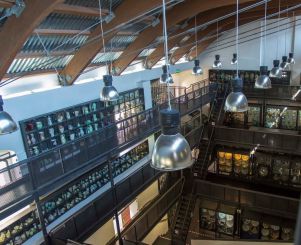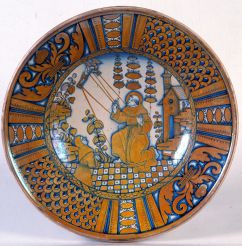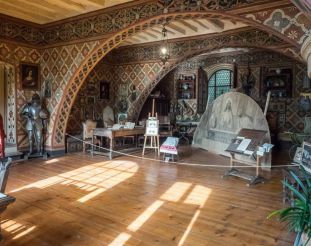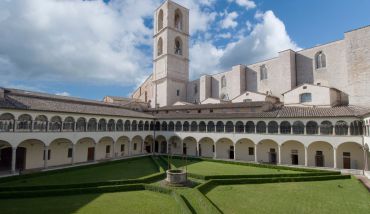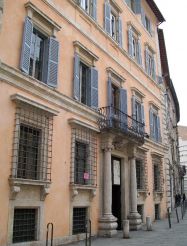Ceramics Museum, Deruta
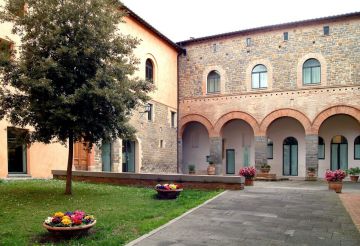
Ceramics Museum (Museo Regionale della Ceramica), located in Deruta, could not be situated in a more suitable place. From ancient times clay was extracted in this small town of the province of Umbria. And, of course, a whole culture based on the production and painting of ceramic products developed here. The museum collected exhibits representing the movements and styles of different eras, so that visitors can trace the history of the development of the art of ceramics in this particular area of Italy.
History of the museum
The Ceramics Museum in Deruta is the oldest museum dedicated to Italian ceramics. It was founded in 1898 and at the very beginning of its existence it was called "Art Museum for Majolica Workers". It is interesting that the document proving the creation of the museum is still kept in the side altar of the church of San Francesco.
Originally, the museum's collection owned about 180 exhibits, most of which were given to the museum as a result of donations. In the future, the number of exhibited items increased tenfold due to receipts from factories and private collections.
Collections of the Ceramics Museum
The history of ceramics art in Deruta can be studied thanks to 6 thousand exhibits. All of them are arranged in such a way that visitors can follow the path of development from the Middle Ages to the 20th century.
In the museum of ceramics, visitors can observe:
- Didactic room – a section that tells about the methods of processing ceramics.
- Archaic Hall – here you can see the findings, which date from the 13-18 centuries. The so-called archaic majolica demonstrates the style prevalent in central and northern Italy in the Middle Ages. Floral ornaments and the use of brown and green flowers are characteristic of it.
- Section presenting the fragments of the floor of the church of San Francesco (supposedly preserved since 1524), Palazzo dei Priori (the work of Giacomo di Marino, created in the middle of the 16th century) and Rocca Paolina (created by Antonio da Sangallo the Younger in the 1540s).
- Hall dedicated to the Renaissance.
- The department, filled with slabs with religious images, some of which, were in churches and temples in the past.
- Hall representing the style of "compendiario", common in the 16th century. Outside of Italy, it is better known as "faience".
- A section that presents the trends of the 17th century to visitors. Art of calligraphy and grotesque images are widely used here.
- Department of the 18th century. The coats of arms are represented in abundanceon various ceramic products here. The predominant color is blue and floral. There are statues.
- Magnani collection is the largest collection in the museum, consisting of items belonging to the doctor Magnani.
- A collection of ceramic items that were used in the pharmacy: vessels for storing medicines, jars, bottles and so on.
How to get there
You can reach the museum by buses E007 and E029, and get to the Deruta Centro stop.
Opening hours: the Ceramics Museum in Deruta is open for visits every day except for holidays.
- During the period from November to February, the collection is available from 10:30 to 16:30 (from 13:00 to 14:30 there is a break).
- In March and October – from 10:30 to 17:00 (13: 00-14: 30 – break).
- From April to June, visitors are welcome from 10:30 to 18:00 (break – from 13:00 to 15:00).
- From July to September, the museum's doors are open from 10:00 to 18:00 (from 13:00 to 15:00 – break).
Admission: entrance ticket costs 7 euros, for a group of at least 15 people – 5 euros, children from 6 to 14 – 2 euros.



